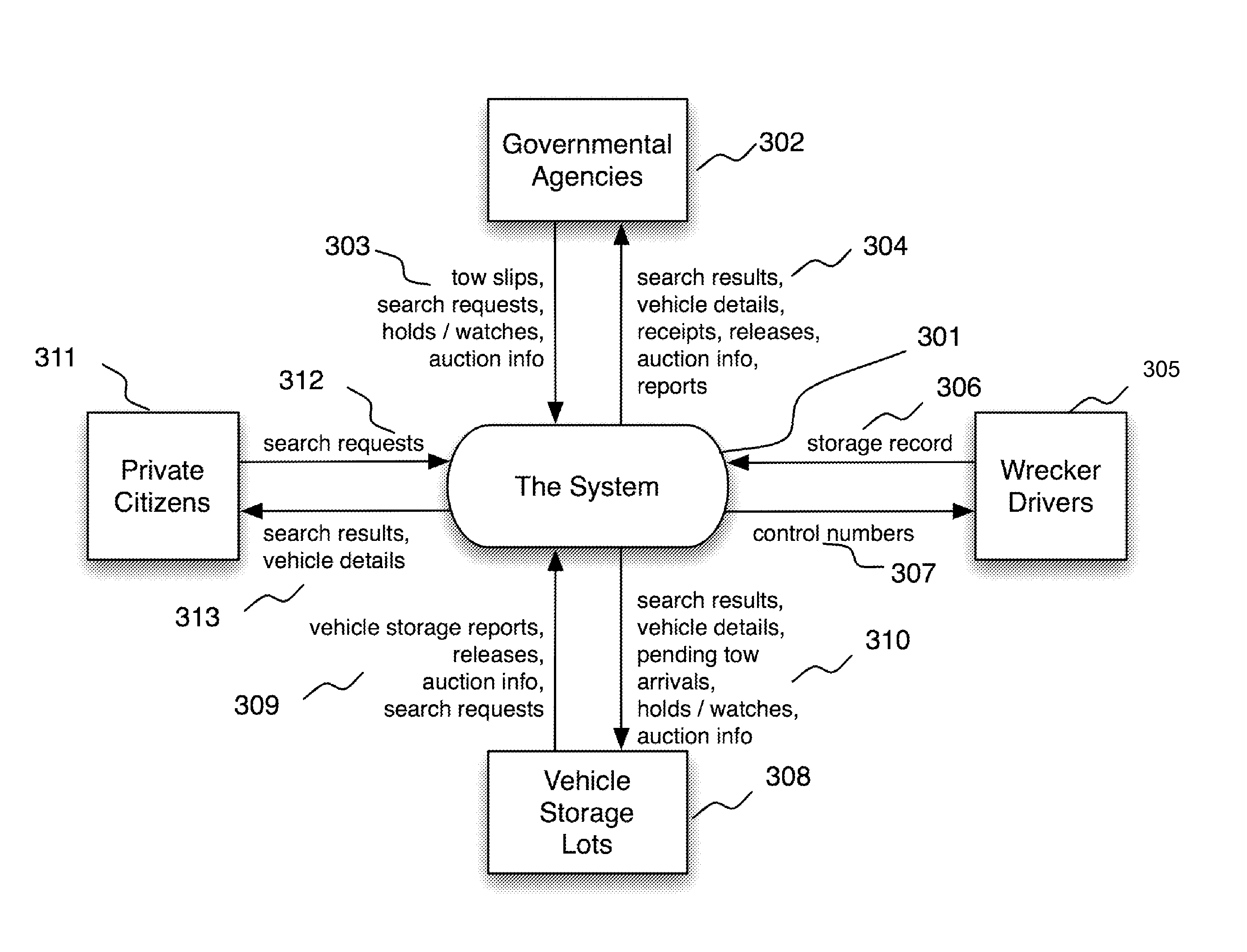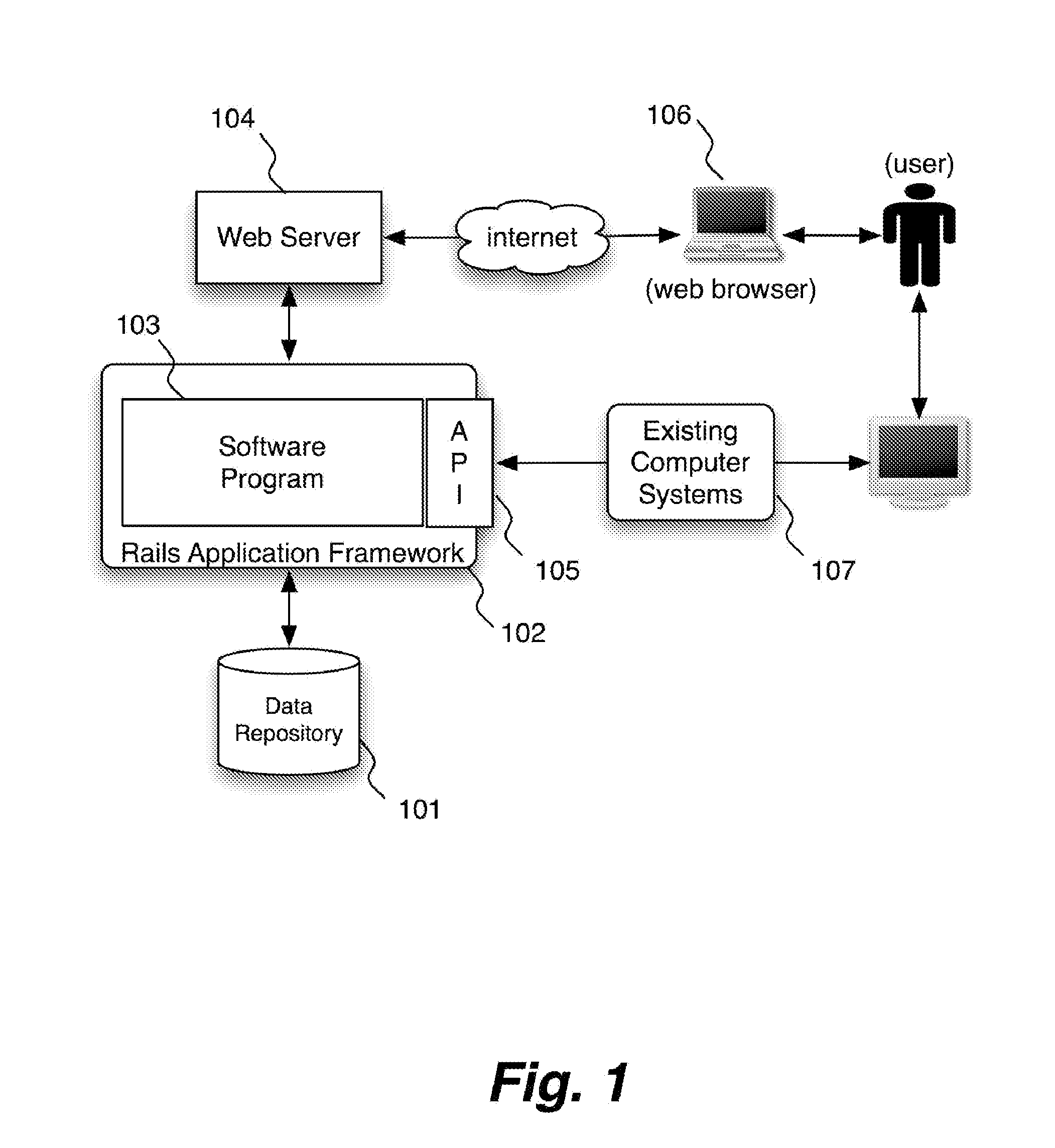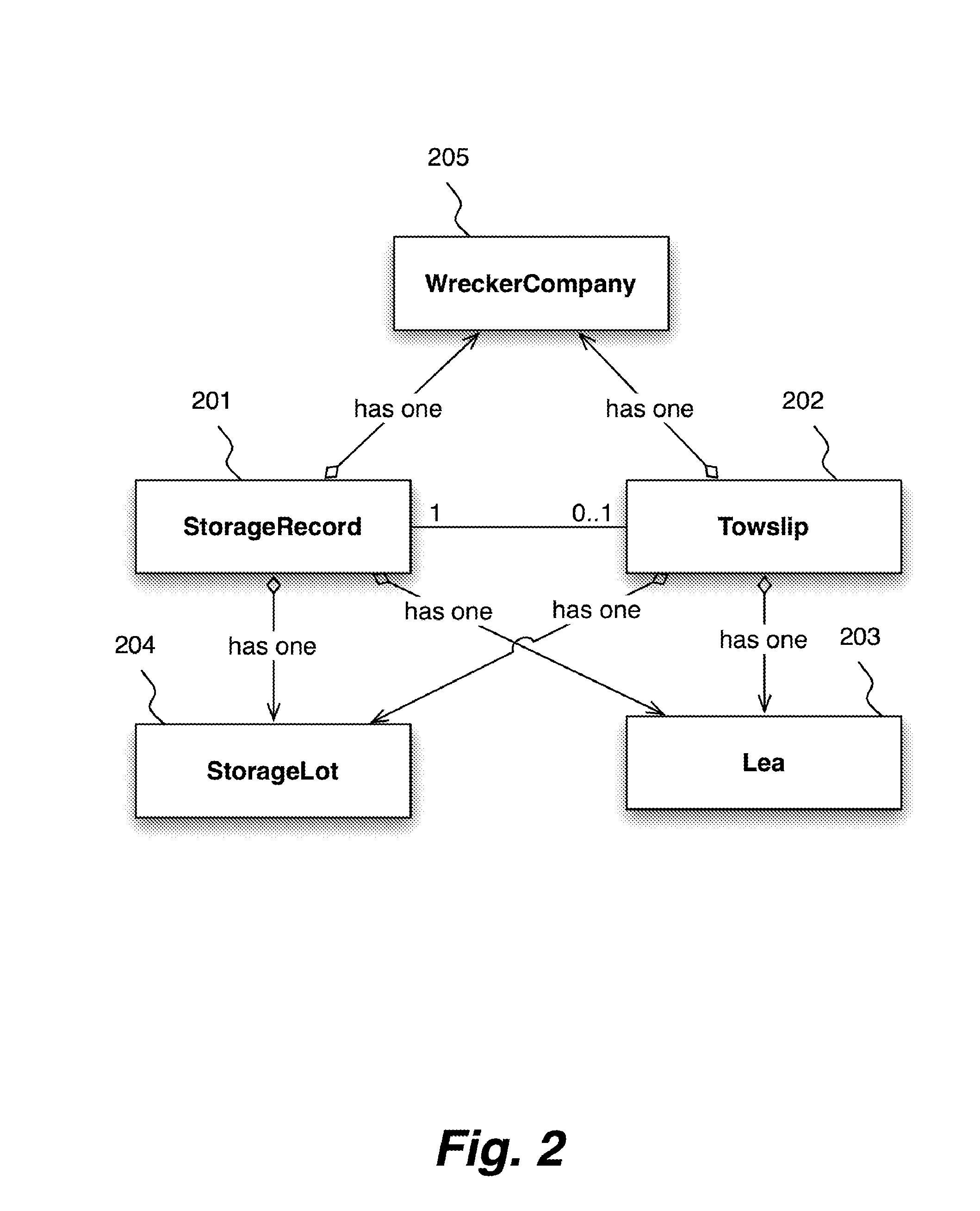Cross-jurisdictional towing administration and data management system
- Summary
- Abstract
- Description
- Claims
- Application Information
AI Technical Summary
Benefits of technology
Problems solved by technology
Method used
Image
Examples
Embodiment Construction
[0038]FIG. 1 provides an overview of a one example embodiment of the present invention, which is comprised of a data repository 101, an application framework 102, a software program 103, a web server 104, and an application program interface (API) 105. In the one example embodiment, the data repository is implemented as a relational database. In other example embodiment the data repository 101 is one or more of a flat data files, an XML repository, an object data base, or any other suitable data store. In the one example embodiment, the software program 103 is written in the programming language Ruby, utilizing the web application framework Rails 102, but could be implemented in any suitable contemporary computer programming language, utilizing any one of a number of available web application frameworks, and running on an appropriate application server for the language of choice. In one example embodiment, the web server is the Mongrel web server. In other example embodiments, the w...
PUM
 Login to View More
Login to View More Abstract
Description
Claims
Application Information
 Login to View More
Login to View More - R&D
- Intellectual Property
- Life Sciences
- Materials
- Tech Scout
- Unparalleled Data Quality
- Higher Quality Content
- 60% Fewer Hallucinations
Browse by: Latest US Patents, China's latest patents, Technical Efficacy Thesaurus, Application Domain, Technology Topic, Popular Technical Reports.
© 2025 PatSnap. All rights reserved.Legal|Privacy policy|Modern Slavery Act Transparency Statement|Sitemap|About US| Contact US: help@patsnap.com



